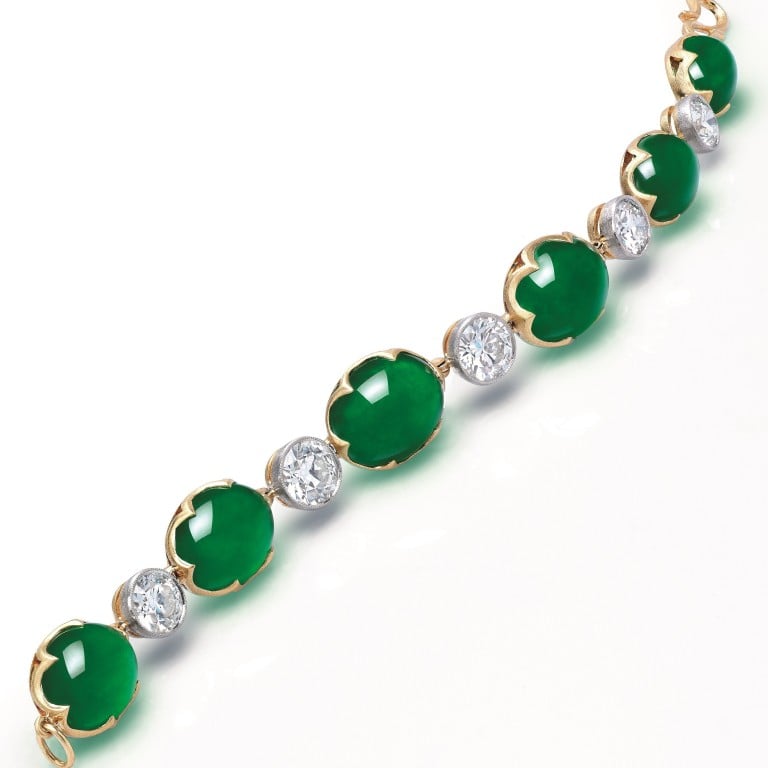Jadeite, a not so hidden gem – the bright green stones enjoying increasing international interest at Sotheby’s and Christie’s auctions

Only available from Myanmar and traditionally cherished in imperial China, where quality green gemstones were believed to be a symbol of purity, jadeite has been less well known elsewhere – until now
For many jadeite aficionados, the precious gemstone is a symbol of purity, wisdom and righteousness, and exudes positive energy to those who wear it.
Chiang Shiu-fung, vice-president and senior specialist, jewellery department, Christie’s Hong Kong, says many people believe that jadeite protects its wearer from getting hurt and brings good health and wealth. Stories abound about women who have tripped or had a fall but escaped unhurt – with the only casualty being their broken jadeite bangles.

Celebrated jadeite designer Samuel Kung says: “Some jadeite pieces seem to be able to connect and interact with their wearers”, referring to how newly polished jadeite is sometimes more vibrant and vivid when it absorbs the alkalinity of the wearer.
“Being slightly alkaline indicates the wearer is healthy and energetic, which is linked to positive energy.”
Kung also believes that upscale jadeite in vivid green, with its mesmerising “water content” or translucency, conveys a sense of serenity.
The “water content” – one of the main criteria for judging jadeite quality – refers to its fine crystalline structure. Chiang notes that it enables rays of light to penetrate the stone and create the prized translucency. The resulting reflection and refraction create an alluring visual effect as if the stone contains water.
The gemstone quickly became the Qing imperial family’s favourite on its introduction to China from Burma (now Myanmar) in 1784. Chiang says: “Top-quality jadeite in vivid green and with glassy translucency has fascinated the Chinese from the Empress Dowager Cixi, who was a diehard fan, through to people in the present day.” Myanmar remains the only source of gem-quality jadeite.

Opulent jadeite designs set record prices at auctions, the best-known being the storied Hutton-Mdivani necklace. Crafted by Cartier, the necklace comprised 27 matching jadeite beads with diameters of 15.4mm to 19.2mm, a diamond and a ruby clasp in gold. It once belonged to style icon Barbara Hutton, an heiress to the Woolworth fortune in the US. The HK$214 million (US$27.6 million), which the necklace yielded at a Sotheby’s Hong Kong auction in 2014, remains the record price for any jadeite jewellery sold at auction. The necklace is part of the Cartier Collection.